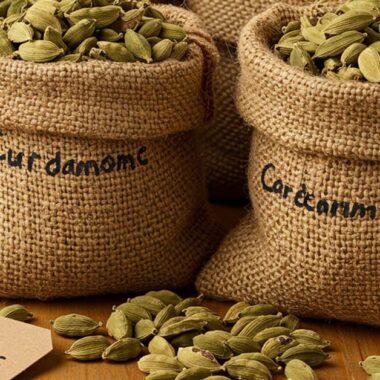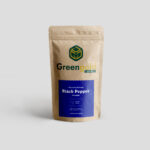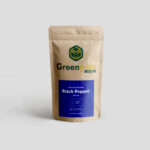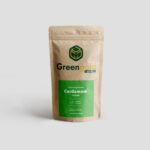Post-harvest losses in cardamom farming can reduce profits and affect the quality of the final product. Proper handling, drying, and storage techniques ensure better yields, higher market prices, and longer shelf life.
Here’s how farmers can minimize losses and maintain premium-quality cardamom! 👇
1. Harvesting at the Right Time ⏳🌱
Harvesting too early or too late can lead to low-quality cardamom. Follow these best practices:
✅ Pick pods when they turn bright green – This is the ideal maturity stage.
✅ Harvest in dry weather to avoid excess moisture.
✅ Use sharp knives or scissors to prevent damage to the plant.
🌿 Avoid overripe pods, as they tend to split open and lose seeds!
2. Proper Drying Methods 🌞🔥
Drying is a crucial step to preserve aroma and prevent mold growth.
🌱 Traditional Sun Drying:
✔ Spread cardamom pods evenly on a clean surface under mild sunlight.
✔ Turn them regularly to ensure uniform drying.
✔ Cover at night to prevent moisture absorption.
🔥 Artificial Drying (Better Quality!):
✔ Use a hot air dryer at 45-50°C for 18-24 hours.
✔ This method retains the green color and aroma better than sun drying.
❌ Avoid over-drying, as it can cause pods to break and lose seeds!
3. Proper Sorting & Grading 📊
After drying, sort and grade cardamom pods to improve market value.
📌 Grade based on size, color, and aroma:
🔹 Large, bright green pods = premium quality.
🔹 Small or discolored pods = lower grade.
🔹 Broken or split pods = used for extraction, not direct sale.
✅ Remove damaged, moldy, or insect-infested pods to maintain overall quality.
4. Smart Storage Solutions 🏡
Storage plays a huge role in preventing moisture absorption, mold, and pest attacks.
✔ Store dried cardamom in airtight containers (preferably jute or plastic-lined bags).
✔ Keep storage rooms cool and dry (ideal temperature: 10-15°C).
✔ Use moisture-absorbing packets to prevent humidity buildup.
✔ Check regularly for insect infestations and re-dry if necessary.
💡 Avoid storing near strong-smelling items, as cardamom absorbs odors easily!
5. Pest & Mold Prevention 🐜❌
Pests like beetles and mold can spoil entire batches of stored cardamom. Use natural pest control methods:
🌱 Neem leaves – Place in storage bags to repel insects.
🌱 Airtight drums – Prevents insect entry.
🌱 Regular sun exposure – Air out storage bags every 2-3 months.
❌ Avoid using chemical fumigants, as they affect flavor and quality!
6. Efficient Packaging for Market Readiness 📦
Packaging should protect cardamom from moisture, pests, and contamination.
✔ Vacuum-sealed or foil-lined pouches maintain freshness.
✔ Eco-friendly, biodegradable bags attract premium buyers.
✔ Clearly labeled packaging (grade, origin, certification) boosts market value.
7. Quick Transportation to Market 🚛
After packaging, cardamom should be transported quickly and efficiently:
🚛 Use ventilated vehicles to avoid heat buildup.
🚛 Avoid long storage periods in warehouses before sale.
🚛 Choose direct sales or cooperatives for better pricing and fewer middlemen.
💡 Exporting? Follow moisture control guidelines to avoid quality loss during shipping!
Why Reducing Post-Harvest Losses Matters 💰🌍
✅ Higher profits – Less wastage means more product to sell!
✅ Better quality – Fresher, more aromatic cardamom fetches higher prices.
✅ Sustainable farming – Less waste, better environmental impact.
🌿 Looking for premium-quality cardamom?
🛒 Shop at Greengold Guide!












